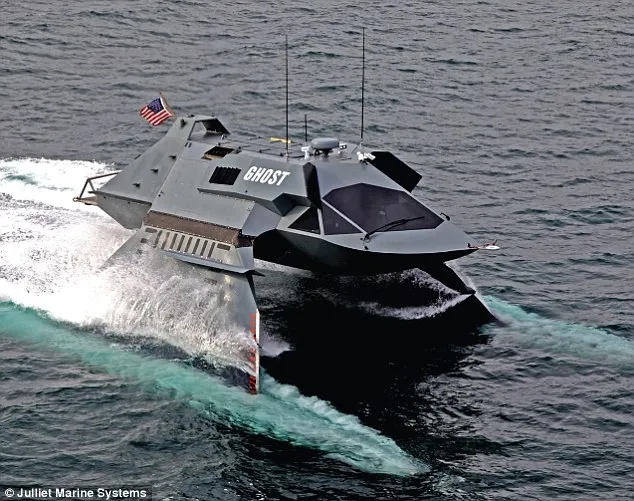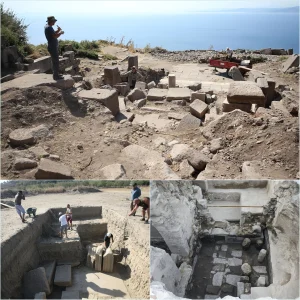Juliet Marine Systems has unveiled plans for an underwater version of its drag-reducing Ghost boat.

The new concept, called the Guardian, is a ‘submersible unmanned surface vehicle’ that creates a bubble of gas around itself to minimize friction, allowing it to hit a top speed of roughly 40 mph.
It works on the principle of supercavitation, and according to the firm, the Guardian is set to ‘transform’ naval capabilities for both manned and unmanned missions, allowing for a smooth ride even in rough seas.
Guardian will be powered by a diesel powertrain with hybrid electric drive, according to JMS.

The system will incorporate the same technology used in the Ghost vessel, but will be capable of both surface and subsurface operations.
It’s planned to be 30-45 feet long, and hit a top speed of 35 knots on the surface with four feet of draft – topping just over 40 miles per hour.
With these capabilities, Guardian could be used for surveillance, mine-hunting, and ‘anti-swarm, short-range firepower.’

The firm estimates construction will take 18 to 24 months, and says the finished vessel could be transported by sea, air, or land.
‘We believe Guardian is the first surface vessel that is a fully submersible USV and one that will meet or exceed the USV mission needs of navies around the world at relatively low cost,’ says Gregory Sancoff, President and CEO of JMS.
‘We expect it to transform the way navies fulfil their operational requirements in maritime technology and provide greater capacity in littoral operations, with a host of multi-mission capabilities encompassing intelligence, surveillance and reconnaissance (ISR); mine hunting; and anti-swarm, short-range firepower.
‘These is no other platform like this in the world.’
According to JMS, the design can also be customized for a buyer’s specific needs.
This comes just months after JMS revealed the Guardian’s predecessor, Ghost, earlier this year.

The high-speed boat spent eight years in development, and uses two 12ft (3.6 metre) winged struts that stand on twin hulls to lift the main craft clear out of the water.
This allows the Ghost to reach speeds of 33 knots (38 mph/61km/h) even when faced with waves of 8ft (2.4 metre) high.
The 38-foot (11.5m) long main cabin rests on top of a pair of 12-foot (3.6m) tall struts which, when moving at speed, prop the cabin above the water like a hydrofoil.
The struts swivel at their base, allowing them to be raised and lowered depending on the water depth.
While parked, or traveling through shallow waters, they can be extended to the side.
In deeper waters, at speeds of eight knots or higher, they can rotate downward to lift the hull into the air, eliminating the jarring impact of waves.
They’re sharpened along the leading edge as well to slice through submerged debris.

At the other end of each strut, a 62-foot (18.8m) long tube houses a 2,000HP gas turbine engine spinning two front-mounted propellers.
These tubes also eject a pocket of air from the front to generate a supercavitation effect that reduces the ship’s drag coefficient by a factor of 900.





